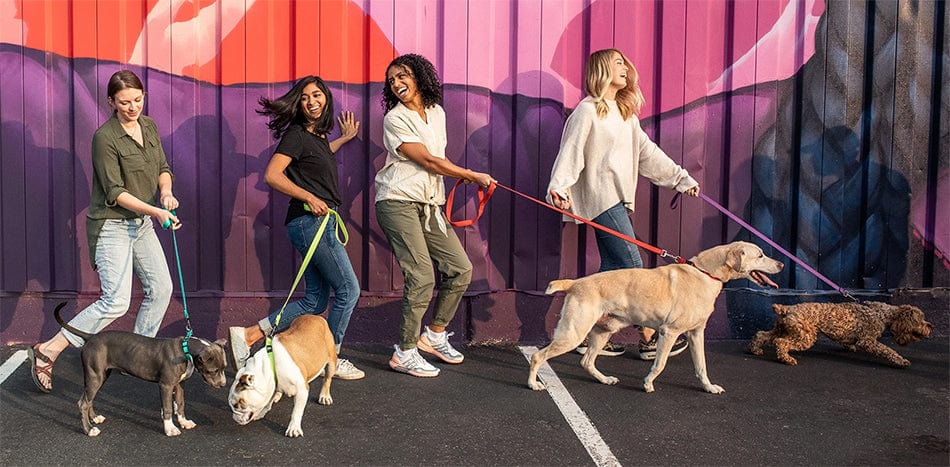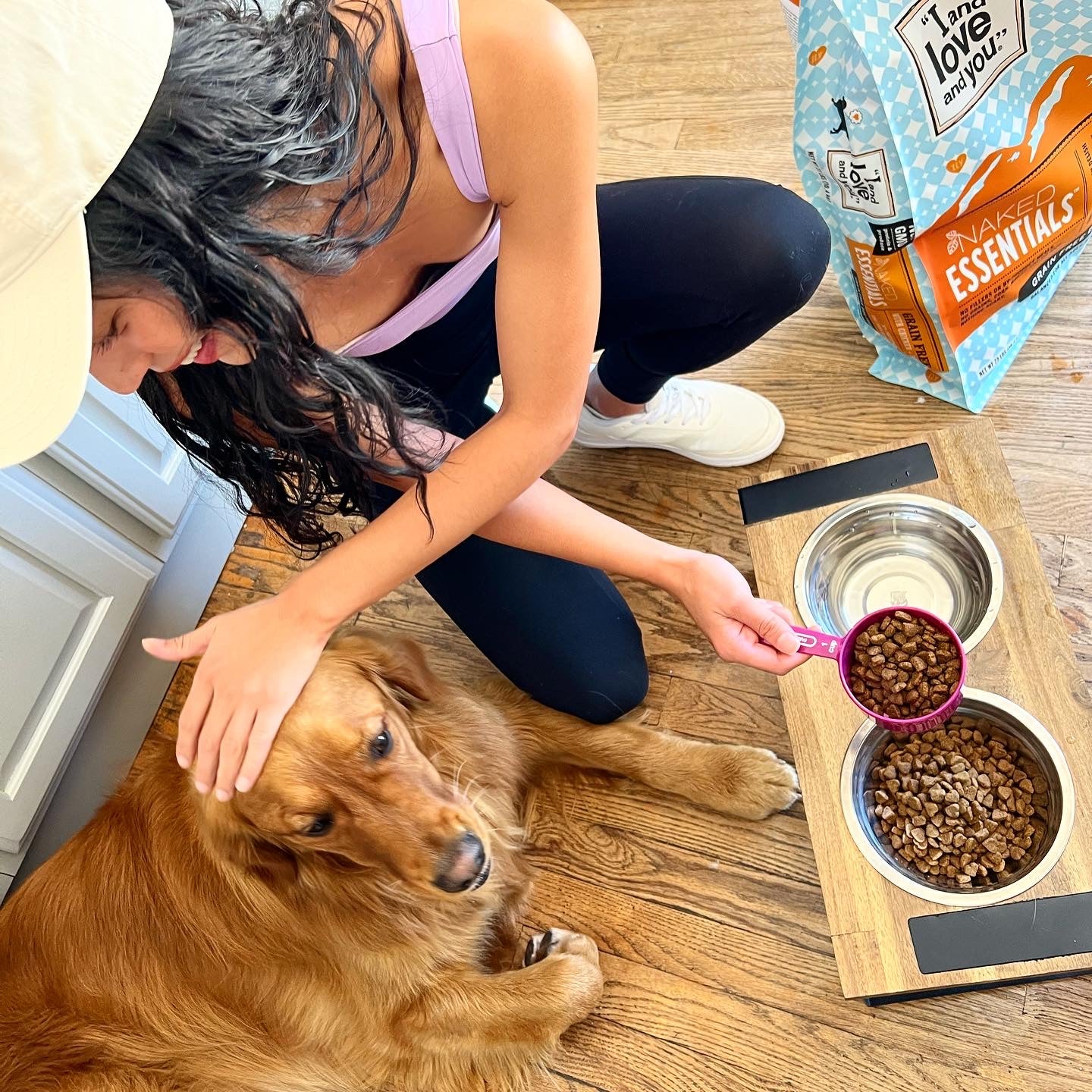Your cart is empty. Let's fix that!


Kibble and canned pet food are designed to be foolproof—but there are a lot of mistakes which can make it go bad all too soon. Keep your pet’s food fresh with these simple tips!
It’s tempting to scoop out some of that giant bag of kibble into a smaller container for easier use, but you might want to think twice before taking that kibble out of the bag. Pet food bags are designed with an oil-resistant layer that retains kibble’s flavor and freshness. Moreover, plastic cat and dog food storage containers get scratches which can hold oils that go rancid and can make fresh new food taste bad or even make your pet sick.
Then again, just rolling up the bag with a bag clip isn’t the best for preserving freshness because oxygen speeds up the process of oil going rancid. So what’s the best storage solution?
The best way to store kibble is to keep it in its original bag and place that whole bag inside an air-tight storage container to keep out air and bugs. You can find pet food storage containers designed for the job, but any storage bin with a lid that has an air-tight seal will do! Plastic storage totes are okay to use if you’re keeping the kibble in its original bag, but make sure to use BPA-free plastic.
If you don’t have the room to keep that big bin in your kitchen storage, you can store small amounts of kibble in a smaller container. Whether you opt for a cat or dog food container or a simple human container (you knew you kept that extra tupperware for a reason), make sure you pick an air-tight glass or metal container to avoid scratches.
Don’t store more than a week’s worth of food at a time to keep it fresh and make sure to wash the container thoroughly between refills. Finally, you should never top off what’s left in the container with more food—you’re just burying old spoiling food that way and it can ruin the fresh food for your pet!
It’s tempting to keep bulky pet food containers in an out-of-the-way place, but that’s not always the best choice. Both kibble and canned food should be kept somewhere that’s temperature and moisture-controlled to keep them fresh. That means that keeping your pet food out in the garage isn’t such a great idea!
Instead, keep your pet food in the kind of environment where you’d store your own food—like in your kitchen. Finding a storage container for your pantry or kitchen cabinets will keep your pet’s food fresh and easily accessible.
Wet pet food spoils quickly at room temperature, so do your best to only serve as much as your pet will eat in one sitting. You should dispose of any leftover wet food after 1-2 hours at room temperature, at which point bacteria can start growing. If your pet prefers grazing, you can try splitting their wet food serving into smaller portions throughout the day or switch to dry food.
However, dry food doesn’t last forever either! Kibble should only sit out for 6-8 hours before the oils can start going rancid in the open air, so make sure to dispose of any leftovers at the end of the day.
You might not think about your pet’s bowls when it comes to food storage—because if your pet loves their food, it won’t be in the bowl for long! However, it’s all too easy to forget to wash out those dishes, and bacterial growth and rancid oils can accumulate quickly on the bowl. That means nasty flavor and potential negative health effects for your pet!
The Food and Drug Administration recommends washing food bowls after every meal, and water bowls should be washed at least once a day. While it might feel like a hassle, it’ll quickly become a part of your daily routine that’ll keep your pet safe.
Did you know that all those pet food cans and giant bags of kibble have expiration dates printed on them? Make sure that the date printed on your pet’s food will give them plenty of time to finish it before it goes bad.
And for those of us who tend to think of expiration dates as more of a suggestion on human food, the same does NOT apply to pet food! Even if the food looks and smells normal (and even if it was never opened), it could be missing vital nutrition. Preservatives and nutrients can break down over time, meaning that feeding your pet expired food could result in dietary deficiencies.
Just like with human foods, sealed foods lose their freshness after they’re opened. Even if your milk doesn’t expire for another month according to the date printed on the carton, it won’t last that long after opening! Pet food works the same way, and kibble can go bad in as little as 1-2 months.
While it might be tempting to buy the biggest bulk bag of kibble, experts recommend only buying as much as your pet will eat in 4-6 weeks. That way your pet will finish their food while it’s still fresh! For passionate bulk buyers, there is another option…
If your pet isn’t going to finish their kibble before it goes bad, you can safely store dog food and store cat food long-term in the freezer to extend its freshness! The same goes for opened wet and fresh foods, which can be portioned into ziplock bags for freezing. Your frozen pet food can last an extra 6-9 months and just requires a little time in the fridge to thaw before serving.
Pro tip: all this advice applies to pet treats too! With all this info under your belt, your pet is going to be thriving on the freshest, most delicious food and you’ll be getting your money’s worth from every pet food purchase.